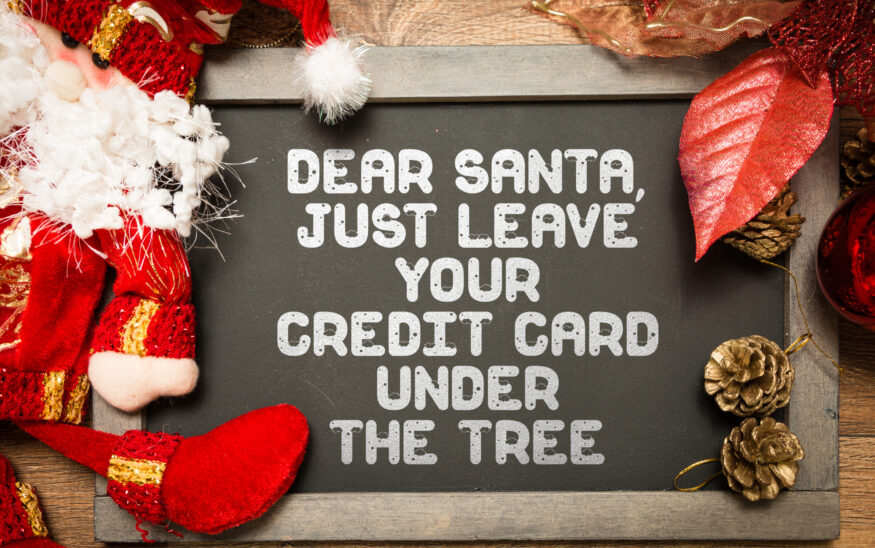Post-holiday Credit Card Debt: How To Dig Out and Get Ready for a New Year
Holiday credit card debt can be overwhelming if you don't get on top of your finances during the first few months of the new year.
Jim Caniglia //January 8, 2023//


Post-holiday Credit Card Debt: How To Dig Out and Get Ready for a New Year
Holiday credit card debt can be overwhelming if you don't get on top of your finances during the first few months of the new year.
Jim Caniglia //January 8, 2023//
According to a recent U.S. News & World survey, Americans spend on average between $500 to $1,000 during the holiday season, with nearly 42% expecting to go into debt to pay for their spending in November and December. With the holiday season now over, many Americans are struggling with the aftermath of debt and a desire to get rid of this not-so-merry pile-up as fast as possible. Here are a few ways you can confront your post-holiday debt and set yourself up for a financially strong new year.
READ — 2023 Will Be the Year of the Earndown: What Every Colorado Small Business Owner Needs to Know
Take Inventory of the Holiday Debt Damage
Once the final present has been opened and the bills start to roll in, it is time to begin tackling the debt you have accumulated throughout the holiday season. First, assess the impact on your financial picture, including total debt amounts and monthly expenses. Gather every receipt and review your bank account transactions to determine how much money you spent and the amount of debt you owe. Next, make a list of your payment due dates, minimum payment amounts, current interest rates and an ideal timeline of when you would like to have your debt paid off.
Find a Payment Strategy That Works Best for You
It is very important to make your credit card payments on time, regularly check your credit score and ensure your credit report is reflecting fiscal responsibility and care. You can consider following the avalanche or snowball strategies to tackle your holiday credit card debt. The avalanche strategy focuses extra payments (after you have paid the minimum amount due on all of your outstanding accounts) toward the bills with the highest interest rate. The snowball strategy directs you to place extra funds toward paying off the smallest debt balance first, then working up to the largest balances as you pay them off. Whichever strategy you choose, be sure to stick with the plan and continue to make progress on your holiday debt payment goals.
Create a Realistic Budget for the New Year
Now that holiday spending is over, it is time to either build or re-evaluate your budget for the new year with your debt in mind. Your budget should be tailored to your specific financial needs and have your annual income, the amount you are spending or have spent, and how much you have put into savings all included. Then, look at how much money you will need to cover your recurring living expenses and the amount you would like to put away for both short-term and long-term savings goals.
Cut Back on Unnecessary Expenses and Save Money
To recover from your holiday debt quickly, you will need to slow down your spending on items or experiences you do not need right now, such as the latest tech, reoccurring monthly subscriptions, discretionary shopping, eating out and impulse buying. These temporary lifestyle changes will allow you to have more money to set aside for savings, while you continue to recover from your holiday season expenses. These financial belt-tighteners can help you quickly pay down the new debt, and set you up for a strong financial year.
READ — Our Economy in 2023: What to Expect
Get Ahead of Next Year’s Holiday Shopping and Spending
To avoid post-holiday debt next year, plan for the expenses you know will come around again and save for them. For instance, if you typically travel, purchase gifts or host holiday gatherings, you can plan for those costs in your budget month ahead of schedule. This would be a great time to consider opening up a savings account dedicated to your holiday spending needs. In addition, to offset the end-of-year spend, you can prioritize your anticipated holiday expenses and spread your shopping out throughout the year. This helps ensure you do not experience a huge blow to your bank account right before the New Year.
The holidays and the financial aftermath of gift-giving can be a stressful time but getting a handle on your debt does not have to be. By following these tips, you can enter the holidays financially confident and avoid the post-holiday debt blues.


























